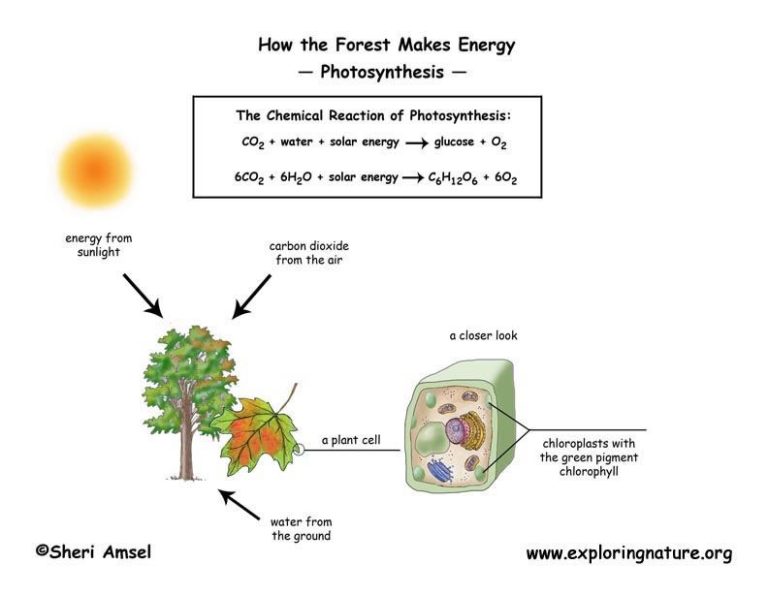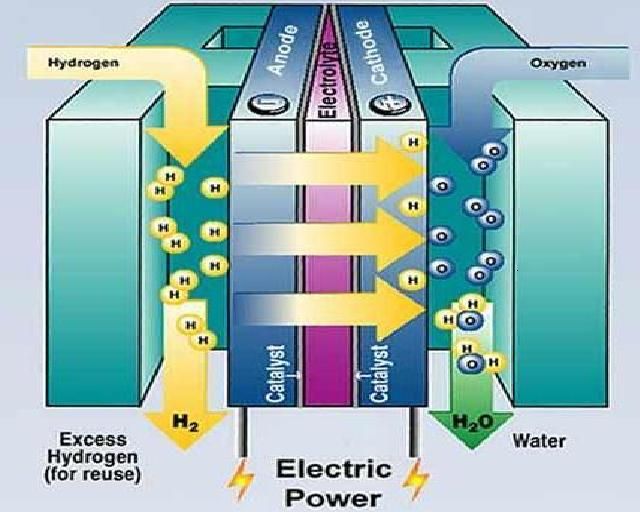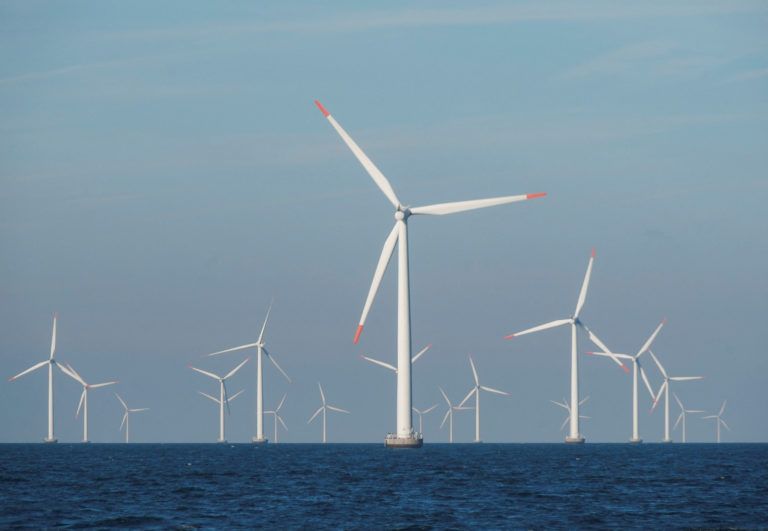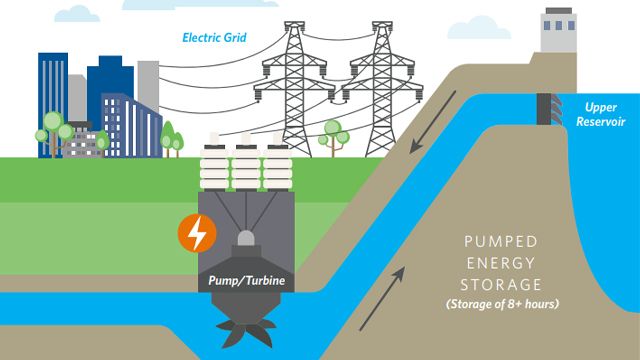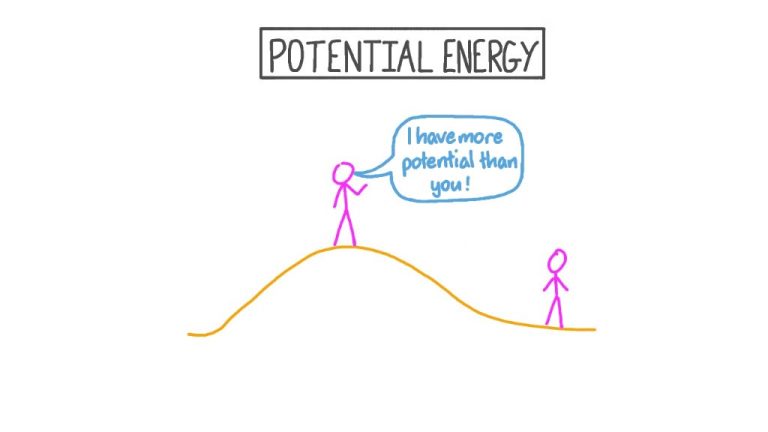Where Does Our Energy Start From?
Energy is defined as the capacity to do work. It comes in many forms like heat, light, motion, electricity, chemical reactions, nuclear reactions, and more. Understanding the sources of our energy is crucial because energy powers our modern civilization. We rely on energy to produce goods, provide services, enable transportation, run technology, and support all aspects of daily life. Knowing where our energy originates allows us to harness it efficiently, plan for future needs, and ensure adequate supply.
The sun is the original source of nearly all energy on Earth. Direct sunlight provides light and heat. Plants convert solar energy into chemical energy through photosynthesis. This stored chemical energy flows through the food chain and is harnessed in fossil fuels. The sun also drives wind, hydroelectric power, and fuels biomass. Nuclear power taps into the incredible forces that power stars. Geothermal energy utilizes the Earth’s internal heat that remains from its formation. Gravitational forces drive tides and hydroelectric dams. Even most renewable energy sources can be traced back to the sun.
Understanding the origins of our energy helps us appreciate our dependence on ecological cycles, finite resources, and natural forces like gravity. It reminds us that energy flows through an interconnected system. Knowledge of energy sources allows us to make informed choices about our energy mix today and plan for transitions to new sources in the future as old ones deplete. With creativity and commitment to sustainability, we can harness energy in harmony with ecological limits.
The Sun
The sun is the original source of most energy on Earth. The sun radiates an enormous amount of energy in the form of electromagnetic radiation, which travels the 150 million kilometers from the sun to Earth. When this radiation reaches Earth, it powers life and drives Earth’s climate and weather.
The sun’s radiation is also captured and converted into usable energy through solar power. Solar energy technologies like photovoltaic panels and concentrated solar plants are able to convert sunlight into electricity. Solar energy is considered a renewable energy source because the sun will continue radiating energy for billions of years. Today, solar power provides only a small fraction of global energy demand, but it has enormous potential to expand and provide clean, renewable energy around the world.
The sun not only provides radiation that can be captured for solar power, but sunlight also drives photosynthesis in plants, algae and some bacteria. Through photosynthesis, sunlight is converted and stored as chemical energy in plants. This chemical energy can then be released when plant matter is burned as biomass fuel. The chemical energy stored in plants millions of years ago is also the source of fossil fuels like oil, natural gas and coal. So whether it is solar, wind, biofuels or fossil fuels, the original source of the energy is the sun.
Chemical Energy
Chemical energy refers to the potential energy stored in the chemical bonds of molecules. When these chemical bonds are broken, usually through combustion or digestion, the stored energy is released as heat and can be used to do work.
Most of the chemical energy we use originally came from the sun. Through the process of photosynthesis, plants are able to capture sunlight and convert it into chemical energy in the form of carbohydrates like glucose. The plants store this energy and use it to grow and function.
When we eat plants, or eat animals that have eaten plants, we are able to utilize the chemical energy stored within. The cells in our bodies break down the carbohydrates, fats, and proteins from food, releasing energy that powers our cells and allows us to move and function.
Fossil fuels like coal, oil, and natural gas also originated from ancient plants and organisms that lived millions of years ago. As these organisms died, they were buried under sediment and subjected to high pressures and temperatures deep underground. This converted their stored organic matter into fossil fuels, which represent a dense form of stored chemical energy from ancient photosynthesis.
So whether it’s the food on our plates or the gasoline in our cars, the original source of this chemical energy is sunlight, captured by plants and passed along the food chain. When we combust fossil fuels or digest our food, we are unlocking chemical energy that originated from the sun and photosynthesis long ago.
Nuclear Energy
Nuclear energy comes from the splitting (fission) or merging (fusion) of atomic nuclei. In nuclear fission, the nucleus of a heavy atom like uranium or plutonium is split into two smaller nuclei. This fission process releases energy as heat and radiation. Nuclear power plants use fission to generate electricity. Controlled fission reactions are achieved in nuclear reactors that contain and control the fission. The energy released is used as heat to boil water into steam which spins a turbine to generate electricity.
Nuclear fusion is the process that powers the sun and stars. Fusion occurs when two light atomic nuclei combine to form a heavier nucleus, like when hydrogen atoms fuse to create helium. Fusion releases even greater amounts of energy than fission. Scientists are working to develop fusion as a future energy source on Earth, but the technology is still experimental. Fusion reactions require immense pressure and temperature to overcome the positive charges repelling the nuclei. If achieved, fusion energy would provide an abundant, sustainable source of “clean” energy with minimal radioactive byproducts.
Gravitational Energy
Gravitational energy is the potential energy stored in an object due to its height above the ground or its position in a gravitational field. On Earth, gravity pulls everything toward the center of the planet. When you lift an object higher against this gravity, you are storing more potential energy in it. The potential energy is directly proportional to the object’s mass and height. For example, lifting a bowling ball to a high shelf stores much more gravitational energy than lifting a feather to the same height, because the bowling ball has more mass.
Gravitational energy can be converted to kinetic energy when the object falls. As it accelerates toward Earth due to gravity, the potential energy gets converted to kinetic energy of motion. This explains why falling objects pick up speed – they are converting that stored gravitational energy into kinetic energy.
The gravity between the Earth and moon also results in gravitational potential energy. The tidal bulges on Earth that are pulled toward the moon have gravitational potential energy because of their elevated position. As the Earth rotates, this position changes and the potential energy gets converted to kinetic energy in the oceans, resulting in the tides. The Earth-moon system is constantly exchanging energy through the tides.
Geothermal Energy
Geothermal energy comes from the heat within the Earth. The Earth’s core is extremely hot, reaching temperatures of over 4,000°C. This heat is due to residual heat from the planet’s formation, as well as heat generated by radioactive decay of minerals. This heat flows outward towards the surface, heating underground rock and water.
Geothermal energy can be harnessed in a few ways. Geothermal power plants can tap into underground reservoirs of steam and hot water to drive turbines and generate electricity. Geothermal heating and cooling systems use the stable underground temperatures near the surface for heating and cooling buildings. Geothermal energy provides a renewable and sustainable energy source that emits little to no greenhouse gases.
While geothermal energy has great potential, it does face some limitations. High temperature geothermal resources are not available everywhere, as they depend on specific geological conditions. Extraction of large amounts of geothermal fluids can deplete reservoirs over time. There are also concerns around triggered seismicity from geothermal operations. Overall though, geothermal provides a valuable carbon-free energy source.
Renewables
Renewable energy comes from natural sources that are constantly replenished. Some of the most common renewable energy sources are:
Solar
Solar energy comes directly from the sun. It can be harnessed through solar panels that convert sunlight into electricity. Solar energy is an abundant, renewable resource that does not produce any greenhouse gas emissions.
Wind
Wind turbines convert the kinetic energy of wind into mechanical power or electricity. Wind power is one of the fastest growing renewable energy sources worldwide. Wind farms can generate large amounts of electricity while having minimal environmental impact.
Hydroelectric
Hydropower uses the energy of flowing water to generate electricity. It captures the kinetic energy of water as it flows downstream to turn turbines. Hydropower is a clean, renewable source already used widely across the world.
Biomass
Biomass energy uses organic matter like plants, wood, and waste to produce heat and electricity. It is a versatile renewable resource that can also produce transportation fuels. Biomass will continue to be an important renewable energy source in the future.
Consumption
Humans consume energy in many forms and from various sources. The main ways we utilize energy include:
- Electricity – Generated at power plants by converting primary energy sources like coal, natural gas, nuclear, hydropower, wind, and solar into electrical energy which is distributed through power grids and used to power homes, businesses, industries, transportation, and more.
- Transportation – Gasoline, diesel, and other liquid fuels derived from crude oil are burned in internal combustion engines to power cars, trucks, ships, planes, and trains for personal and freight transportation.
- Heating – Natural gas, fuel oil, propane, and electricity are used to provide heat for buildings through furnaces, boilers, and electric heating systems.
- Industry – Various energy sources power manufacturing operations, including fossil fuels for high temperature heat, electricity for motors/machinery, and feedstocks that are processed into materials and products.
- Commercial Use – Businesses rely on electricity for lighting, appliances, electronics, HVAC systems, and more. Many also use natural gas for heating, cooling, and cooking.
Per capita energy consumption is highest in developed countries that have greater access to modern amenities and technology powered by electricity and fuels. More efficient homes, vehicles, devices, and processes can help reduce energy demand while still providing services people rely on daily.
Future Sources
As fossil fuel reserves continue to dwindle, scientists and engineers are actively researching and developing new energy sources to meet future demand. One extremely promising technology is nuclear fusion. Fusion power plants aim to replicate the same reaction that powers stars, fusing lighter atoms like hydrogen into heavier ones like helium. This releases enormous amounts of energy with no greenhouse gas emissions.
Major research projects around the world are racing to demonstrate a sustained fusion reaction and build the first commercial fusion reactor. The International Thermonuclear Experimental Reactor (ITER) project based in France plans to build the largest tokamak fusion device by 2025. Meanwhile, private companies like General Fusion and TAE Technologies are pursuing alternative fusion reactor designs. If these efforts succeed in the coming decades, fusion could provide an abundant, safe, and clean energy solution for generations to come.
Other cutting edge energy technologies like harvesting solar power in space or extracting energy from black holes may seem futuristic today, but could potentially move from theory to reality if physics research continues to advance our understanding of the universe. With so many brilliant scientists and engineers dedicated to solving our energy needs, the future seems bright for innovating new energy sources.
Conclusion
As we have seen, the sources of energy that power our modern world originate from diverse places. Ultimately, however, the primary driver is the Sun. The Sun’s radiant energy is captured and stored by plants through photosynthesis. Over millions of years, this stored energy in plants and animals is compressed under heat and pressure into fossil fuels like oil, gas, and coal. The heat within the Earth’s core comes from radioactive decay of heavy elements formed during the planet’s creation, while gravitational and motion energy come from the Earth’s rotation and orbit around the Sun. Though we rely heavily on non-renewable sources like fossil fuels today, innovation in renewable resources like solar, wind, hydro, and biofuels offer hope for a more sustainable energy future.
In conclusion, while energy sources like oil, coal, natural gas, and nuclear fuel our world today, their origins can be traced back to the Sun. As we work to transition to renewable energy, it is awe-inspiring to reflect on how our entire civilization is ultimately powered by the Sun.

